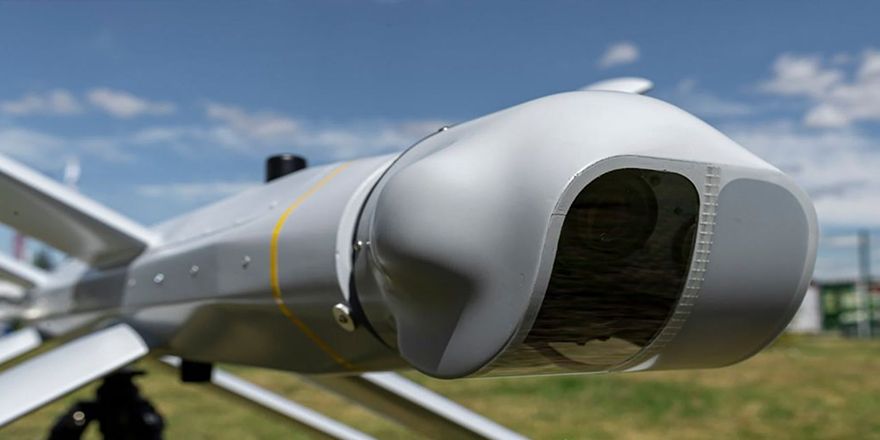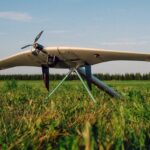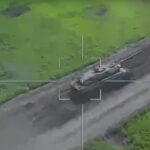At one of the meetings at Zelensky, the head of the AFU Valery Zaluzhny reported heavy losses for two months of the counteroffensive. According to him, the losses amounted to more than 500 units of heavy equipment, of which 300 – irrecoverable. The main reason is minefields and enemy dominance in the sky, while the Lancet UAV has become the main problem for Ukrainian formations due to the invulnerability of the Russian kamikaze drone to Ukrainian REBs.
According to an observation by The Washington Post’s anonymous source, an important feature of Russian defenses along the 900-kilometer front are “ubiquitous drones” that provide Russian forces with real-time detailed information on the location of Ukrainian units, and allow for precision strikes by FPV drones and Lancet barrage munitions. “It’s a task that even U.S. forces, despite all their combat experience over the past decades, have not faced on this scale,” WP writes.
On the Ukrainian front in the zone of the special military operation, the Russian Armed Forces use two types of Lancet barrage munitions: the older model Lancet-1 (Izdeliye-51) with a warhead weight of five kilograms and the smaller Lancet-3 (Izdeliye-52) with a warhead of three kilograms. Externally, the two versions of the kamikaze drone differ in fuselage length and tail wing. Izdeliye-52 – Lancet-3 – has a pair of equally sized X-shaped wings, Izdeliye-51 – Lancet-1 – a larger version, with one large X-shaped wing and a smaller tail wing.

The Lancet-3 operator can use the kamikaze drone at a range of up to 40 km and a maximum flight altitude of 5 km, the electric motor makes the Lancet virtually silent. A barrage drone cannot be heard, and its low-observability and stable control channel make it virtually impossible to intercept the UAV. On numerous videos in social networks draws attention to the fact that Ukrainian servicemen a few moments before the explosion realize that now will be struck by the Lancet, and scatter in different directions from their equipment.
“Because at a speed on the approach of about 300 kilometers per hour from this product in principle no longer anywhere to dodge. Because if it has entered the zone in one way or another, that’s it. That’s all!”, – commented Alexander Zakharov, Chief Designer of ZALA AERO Group of Companies.
Lancet operators note that the drones can be used in winter, in rain and snow, as well as in low cloud cover. The ammunition guidance system allows to maximize the accuracy of the hit under any conditions, and the reinforced cumulative warhead is capable of penetrating the hull of German tanks, causing fire and explosion of ammunition.
“In view of the fact that evacuation and repair of foreign equipment is difficult, and in some cases impossible, the Lancet’s arrival on Leopard tanks is guaranteed to put the vehicle out of action, and in case of critical damage practically excludes its further use by the AFU on the front,” writes the TG-channel Military Chronicle.

According to Alexander Zakharov, Lancet is a folk but quite accurate name for a barrage munition, these are two products that differ in size, mass and power of the warhead. And, strangely enough, the German tanks very effectively destroys the “Lancet-3” despite the smaller mass of the warhead, said the chief designer in a report by VGTRK correspondent Alexander Rogatkin July 16, 2023.
The first combat tests of the Russian kamikaze drone passed in Syria. In April 2021, the Lancet was used in strikes against the Tahrir al-Sham group (a terrorist organization banned in Russia) in Idlib governorate.
On June 8, 2022, Rostec reported that Lancet and KUB-BLA drones were engaged on the Ukrainian front. A month later, the first video of their combat use in the NWO zone appeared. Since the end of 2022, many videos of kamikaze drones hitting various Ukrainian military targets, including air defense systems, self-propelled howitzers, tanks and military trucks, and NATO equipment, began to appear on social media. On November 4, 2022, a video of a Ukrainian Navy gunboat Gyurza being hit appeared. In March 2023, the Lancet destroyed the UK-supplied Stormer HVM air defense system.
A large number of videos that are shown on social networks were made by fighters of the operational and combat tactical formation Kaskad. The unit is commanded by Colonel-General Alexei Dikiy, the DPR’s acting Minister of Internal Affairs. In an interview with Alexander Rogatkin, he told the story of putting the Lancet UAV into service in the unit, about the peculiarities of its use and high efficiency in hitting targets.
“We have a special unit with a narrow profile, which is tailored to a certain type of tasks: liberation of populated areas, point destruction of enemy resistance centers. Therefore, during training we studied all necessary and possible types of weapons that can be used in close combat. Our units were used to support the tasks of the Armed Forces of the Russian Federation, which have quite powerful fire systems and can work both far and close, but in close combat these systems can not be used due to the fact that we are very close to the enemy, and you can hit your unit. Therefore, having studied all possible variants of alternative weapons that are currently used by various countries, we came to the conclusion that these munitions [barrage munitions] can be used in close combat,” Alexei Dikiy shared.

He explained that after studying the market, Cascade first started using quadrocopters, and then the Lancets. “The main problem we had was to introduce this type of weapon into the combat order. And those units that work with it, so that they do not look like hunters for some types of equipment. It was necessary for them to help carry out offensive actions and, if necessary, to become a KBB [KBB – counter-battery warfare – note: Aviation of Russia]. And as the last two months of fighting have shown, they also work effectively in defense,” Alexei Dikiy noted.
The Lancet operator selects the most important dangerous target when performing a combat mission. These are usually UAS and artillery pieces. “Therefore, if we are conducting offensive actions, we destroy all the enemy artillery that is on the line of contact. Thus it was revealed that all American artillery equipment that was delivered: and “three sevens”, and “crabs”, self-propelled guns – they all fall into the zone of defeat Lancet. If it’s a defensive combat action, the Lancets proved themselves well enough in stopping the column,” says Commander of the OPF Cascade.
When the enemy column advances, the first two Lancets strike the first two vehicles, the rest turn around and try to get away, but get caught in minefields. All NATO-made armored fighting vehicles Lancet pierces through, including tanks in a frontal attack, explained Alexei Dikiy.
“The main thing is the ease of use and complete independence from any means of countermeasures. It is practically impossible to fight with it,” says Alexander Zakharov and adds that the Lancet can be shot down only physically, but not by REB means.
The actual number of Lancet produced is not disclosed. However, the ZALA AERO group of companies assures that since the beginning of the special military operation their production has increased 50 times, and for every Western tank, including those that have not even been delivered to Ukraine yet, several drones are already stocked. The factory where they are made is housed in a shopping center in Izhevsk, which has been left idle after some Western companies left the city.
In a report by Alexander Rogatkin shown on July 16, 2023 on Russia 1 TV channel, the next-generation Lancet line of barrage munitions, Izdeliye 53, was demonstrated for the first time. The kamikaze drone is designed for both single and group strikes. For this purpose, a special launching catapult for several drones has been developed; a battery of several catapults will be able to provide simultaneous launching of up to several dozens of drones.

The new Lancet should fit into the concept of network-centric warfare, when a “swarm of drones” is united by a neural network into a single strike “swarm”, where one drone finds a group target and immediately transmits information about it to the rest of the drones, and each in the “swarm” chooses a suitable target for its individual munition. This technology has already been practiced on the previous generation Lancet.
“We have already conducted a series of combat experiments, range combat exactly at the level of fully automatic application without human participation. A person just gives a command, defines the area and says: only armor. And neither pickup trucks, nor people, no one suffers, the drone is only looking for armor or barrel artillery. But it has a spreadsheet from the accounting department where it knows that air defense and radars cost more, and if it sees a tank and a radar, it will choose the radar. And this is all tried and tested,” said the chief designer of ZALA AERO.
To set the right course and hit the chosen target, the Lancet can use artificial intelligence algorithms to find it, Forbes writes. Alexander Zakharov chuckles at this and says that he does not believe in artificial intelligence, in fact – it is a set of algorithms to make a decision in certain conditions.

The most “popular” target for the Lancets is the American M777 155mm towed howitzer. A total of 208 howitzers of this type have been delivered to Ukraine by the US and other NATO countries as of mid-July 2023. At least 63 instances of Lancet hits on these howitzers have been confirmed during the SWO. It is not necessarily that all of them were destroyed, some were destroyed, some were damaged, but at least a third of all howitzers of this type became targets for the Lancet, ZALA AERO said.
Only during the year of the SWO on the Ukrainian front Lancet destroyed 32 MANPADS, 37 tanks, 87 locomotive artillery units, 15 MLRS installations, 114 guns and mortars, 34 radars. This is some data from open sources, Ukrainian security services do not disclose information on losses, so the number of targets destroyed by the Lancet can be much higher. The peculiarity of the use of these kamikaze drones is that the cost of the targets to be hit can be two orders of magnitude higher than the cost of the barrage munition itself.
According to Alexander Zakharov, ZALA AERO takes about 400 rubles from the enemy per invested ruble. For example, the German IRIS-T air defense system with missiles and radar station destroyed by the smallest Lancet-3 costs 140 million euros, while the kamikaze drone costs 35 thousand euros, which is 4000 times cheaper.
The Lancet barrage munition, created in Izhevsk, one of Russia’s weapons capitals, is a surgical tool for the Russian army, which causes both physical damage, destroying the enemy’s military equipment, and moral damage, when the enemy, hearing the whirring of the electric motor, realizes that retribution is inevitable and scatters to the sides, and economic damage, which in a protracted war of attrition gives the enemy no chance of survival.







